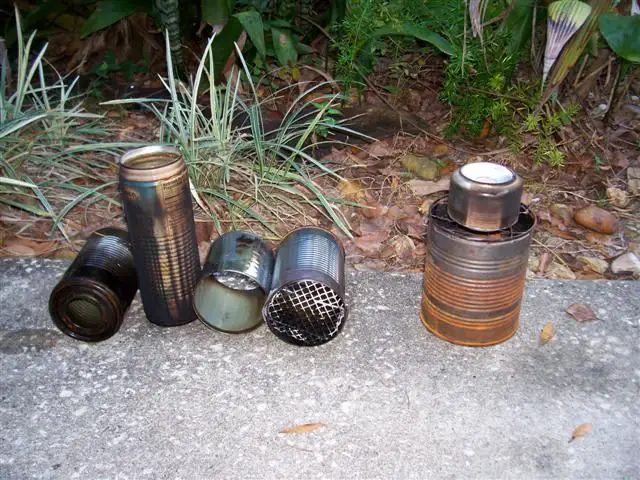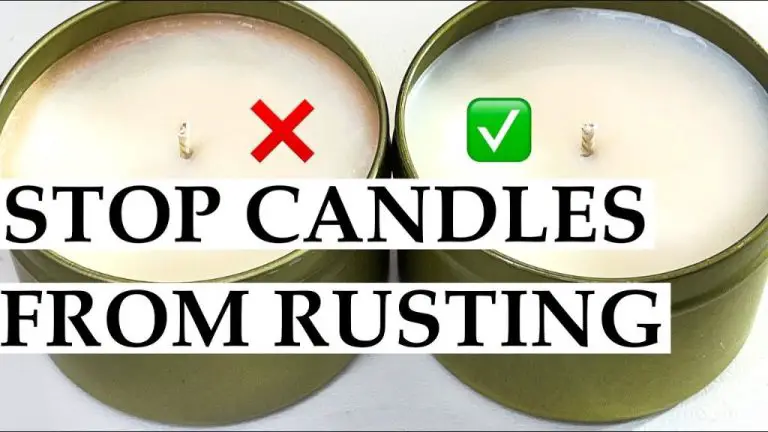Do Candle Warmers Use A Lot Of Electricity?
Candle warmers are devices that melt candle wax using a low-wattage light bulb or heating element, slowly releasing the candle’s fragrance without an open flame. Unlike burning a candle, a candle warmer does not require lighting a wick. The candle sits on top of the warmer and fills the room with scent as the wax is warmed.
How Candle Warmers Work
Candle warmers heat candles using a low-wattage electric heating element, typically between 25-60 watts. The heating element is powered via an electrical cord that plugs into a standard wall outlet. Most candle warmers use a ceramic heating plate with an embedded heating coil to gently warm candles to between 120-140°F. This is hot enough to melt the wax and release the candle’s fragrance, but not hot enough to reach candle’s flashpoint and cause an open flame.
The candle sits atop the heating plate, either in its original container or placed in a reusable dish designed for the warmer. As the heating element warms the bottom of the candle, the wax begins to liquify and distribute fragrance into the air via convection. The wax is absorbed into the wick as it melts, providing fuel for fragrance diffusion. But since the temperature stays below the flashpoint, no open flame can form.
Many candle warmers have adjustable temperature controls, allowing users to customize the melt rate and fragrance intensity. Some include timers or auto shut-off features for safety and convenience. The heating plates are designed not to overheat or burn surfaces when left on for extended periods.
Electricity Usage

Candle warmers use relatively little electricity compared to many other household items. The wattage of candle warmers can range from as low as 5 watts to 25 watts for larger models. Generally, standard size warmers are around 15 watts.
To put this in perspective, here are some examples of the wattages of other common household items:
- Incandescent light bulb – 60 watts
- LED light bulb – 8-12 watts
- Microwave – 1000-1500 watts
- Space heater – 1500 watts
- Electric stove burner – 1000-3000 watts
As you can see, a candle warmer requires far less electricity than major appliances like microwaves, space heaters, and stoves. The small wattages mean candle warmers have very minimal operating costs.
Cost Comparison
When comparing electricity costs of using a candle warmer versus the cost of traditional candles, the candle warmer is generally the more affordable option in the long run. Though the upfront cost of purchasing a candle warmer device may be more than a single candle, the electricity needed to run most warmers is minimal.
Most candle warmers use less than 15 watts of power. To put this in perspective, a standard incandescent light bulb uses 60 watts. Running a 15-watt candle warmer for 8 hours per day for a month would cost around $0.50 on average. On the other hand, burning a standard candle continuously for 8 hours a day would require multiple candles to last a full month. High quality candles can cost $5-$15 each and burn for around 20-40 hours. To burn a candle continuously for 8 hours daily, you’d need anywhere from 6-24 candles or more per month.
In summary, while a candle warmer requires an upfront investment, it will pay for itself in the long run by reducing the ongoing cost of purchasing multiple candles per month. The electricity required to run a warmer is minimal compared to the cost of frequently replacing burned candles.
## Safety
Candle warmers provide a safer alternative to burning candles. With an open flame, traditional candles pose a fire hazard, especially if left unattended. However, electric candle warmers eliminate this risk entirely. The warming plate does not actually produce any flame or heat that could ignite materials nearby. This makes candle warmers a wise choice for homes with children or pets where fire safety is paramount. There is no need to worry about curious little hands or wagging tails accidentally tipping over a hot candle. Candle warmers allow you to enjoy the aroma and ambiance of candles without the danger of open flames. For those concerned about potential fire hazards or wanting to minimize risks, candle warmers are an excellent option over burning candles.
Aroma
One of the main reasons people burn candles is for the lovely scents and aromas they produce. So how does the scent throw of candle warmers compare to burning candles directly?
In general, candle warmers tend to distribute fragrance more gently and evenly than burning a candle. The wax melts slowly over several hours, steadily releasing the aroma into the air. With a burning candle, the scent can be stronger at first when the flame is directly heating the wax, then fade as the candle burns down.
The gentler warming method of candle warmers results in less fading of the fragrance over time. The scent tends to remain consistent for the duration that the melted wax remains in the warmer. This allows you to enjoy the aroma for many hours without it getting overwhelmingly strong or diminished.
Additionally, with no open flame, candle warmers don’t burn off the fragrance notes the way direct candle burning can. All the nuances of the scent are able to be released gently into the air.
So while the aroma may not be as intense right away as a burning candle, a warmer provides a more even, longer lasting scent throw. This can allow you to enjoy the full depth of the fragrance for a longer period.
Pros and Cons of Candle Warmers
Candle warmers offer certain benefits but also have some drawbacks to consider. Here are the main pros and cons of using a candle warmer:
Pros
Safer than burning candles: Since there is no open flame, candle warmers eliminate the fire hazard of traditional candles. This makes them safer to use around kids and pets.
Reduce soot and smoke: Candle warmers don’t produce any smoke or soot like burned candles do. This keeps your home cleaner.
Get more fragrance: The candle wax lasts longer in a warmer so you get more fragrance for your money. The aroma also fills the room more evenly.
Convenient: Just place a candle in the warmer, turn it on, and enjoy the scent. There’s no need to monitor it or deal with dripping wax.
Cons
Cost of electricity: While candle warmers don’t use much electricity, there is still a cost to run them. The expense may add up if used daily.
Limited fragrance options: Warmers only work with oils and wax melts. You can’t use them with other candle varieties like gel or soy.
Not as decorative: The look of a flickering candle flame can be part of the appeal. Warmers don’t provide the same ambiance.
Potential plastic smells: Some warmer models produce a plastic smell when heating up, which can diminish the fragrance.
Environmental Impact
Candles produce waste in the form of melted wax and packaging. The wax ends up in landfills and is not biodegradable. The packaging is typically plastic or glass, also ending up in landfills. Candle warmers produce significantly less waste. The only waste is the packaging, which is much smaller than candle packaging. Some candle warmer models allow you to reuse the same wax melts over and over, producing zero waste. Overall, candle warmers have a much lower environmental impact compared to traditional candles in terms of waste.
Types of Candle Warmers
There are a few main types of candle warmers to choose from:
Electric Candle Warmers
Electric candle warmers plug into a standard electrical outlet and use a lightbulb or heating element to gently heat the candle. These often have a dish on top to hold the candle, allowing the heat to warm the wax and distribute the fragrance. Electric warmers allow you to use all the candle wax without having to light a wick.
Candle-Heated Warmers
Candle-heated warmers don’t require any electricity. Instead, you place a lit votive or tealight candle below a warming plate. The candle flame gently heats the plate to warm the candle on top. These are a great option to use during power outages.
Battery-Powered Warmers
Battery-powered candle warmers run on batteries rather than a power outlet. They typically have a small electric heating plate to melt the candle wax. Many are portable so you can move them between rooms or take them when traveling. Just switch out the batteries when they run low.
Conclusion
In summary, candle warmers use a very minimal amount of electricity to melt candle wax and distribute fragrance. Typical usage is around 12-20 watts, which translates to less than $1 per month in electricity costs for the average user. Compared to burning candles, a warmer is clearly more energy efficient and cost effective. They also eliminate issues with soot, smoke, and fire hazards from open flames. The only potential downsides are less fragrance throw than burning candles, and limitations on the types and sizes of candles that can be used. But overall, candle warmers are an affordable, safe, and environmentally friendly alternative that provide all the aromatic benefits of candles without many of the drawbacks. For most candle enthusiasts, a warmer can be an excellent addition for conveniently enjoying candle scents at minimal ongoing cost and effort.



